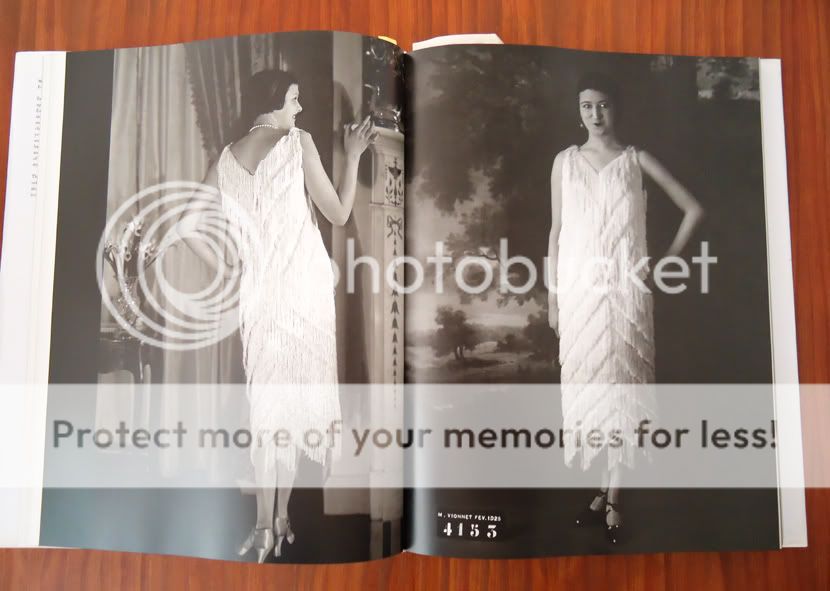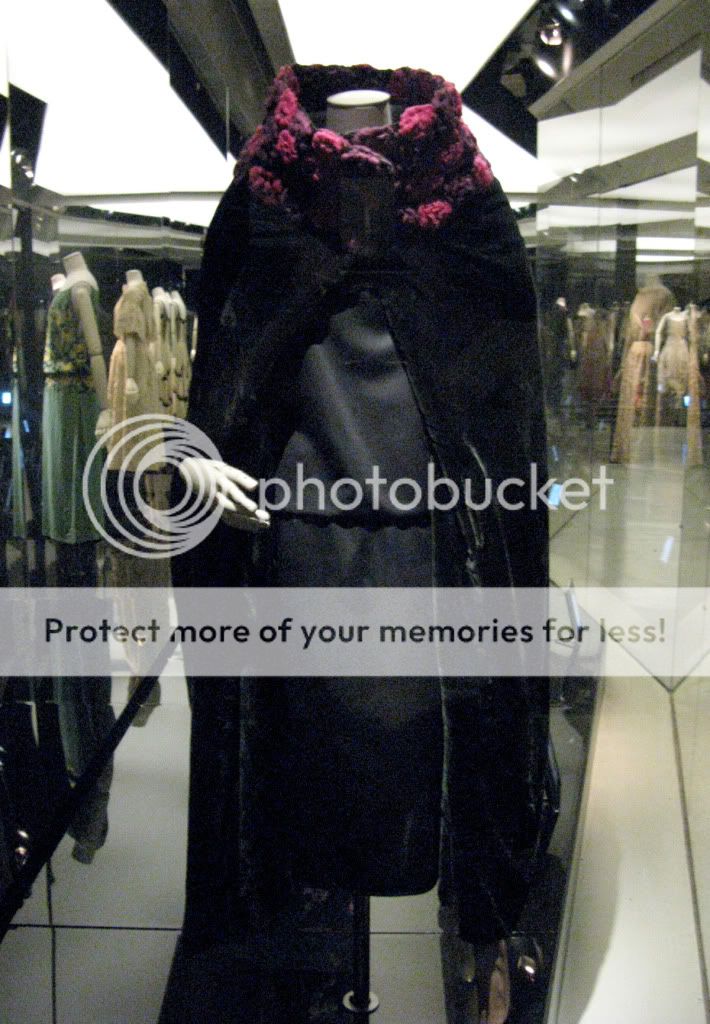. MADELEINE VIONNET
En el 2009 tuve la oportunidad de ir a la muestra de Madeleine Vionnet que se hizo en el museo de artes decorativas de Paris y me compré este libro. Tambien, como buena argenta irresponsable, hice un par de fotos de la muestra. Verlos es absolutamente divino, ver vestidos con historia en frente tuyo, es lo mejor para la imaginación. Primero les muestro partes del libro por dentro y algunas frases y al final, las de la muestra.
Como me gusta decirle: Vestidos con los que te casarías una y mil veces.
Como me gusta decirle: Vestidos con los que te casarías una y mil veces.



*Silk linen in gradations of brown and beige, cut on the grain and assembled to form a geometrical composition, gold-edged seams. (1922)


*Chiffon printed in a fern motif, pink satin ribbon laced through the neckline and anchored in back by the matching sash. (1933)


*Ivory crepe marocain cut on the bias and embroidered with fringes. (1925)


* Draped and shirred white crepe romain, asymmetric bodice with a coil of fabric around one armhole. (1935)


*Black organdy stiffened with horsehair piping forming bayadere stripes. (1936)

*Black velvet and lace dress in two layers: sheath with bare and halter neck, lace overskirt and bib, strass brooch. (1936)



*White Rosalba dress crepe cut on the bias, backless bodice, belt of gilt leather leaf-shaped cutout. (1936)


*Ivory chiffon cut on the bias, overlaid with navy blue Chantilly lace stars. (1937)


* Black velvet appliquéd with white panne velvet lozenges of increasing size. (1938)



* Violet velvet, twisted bandeau bodice, collar band attached in back, skirt with red velvet stripes. (1938)



“Taste is a feeling that makes all the difference between what is beautiful and what is merely showy-and also what is ugly! It is transmitted from mother to daughter. But some people don´t need to be educated; they are innately tasteful. I think I am one of them”
“I must tell you that in the matter of the cut, I think I discovered everything that´s being done today; when I see something, I say: it´s already been done!...I was obsessed by my métier”
“In those days crepe de chine was used only to line dresses. I was the first to do the bias cut, but only once I had my own business and I could do what I wanted…the bias cut was fluid, easy, promising”
"Crepe, Madeleine Vionnet favorite material, is a crisp and slightly elastic fabric, rough to the touch, and remarkably fluid on the bias.
The chiffons and crepes frequently listed in madeleines vionnet´s archives are graded from very light to ultraheavy: chiffon, crepe de chine, crepe romain and crepe marocain."
"Balenciaga dresses me, he´s a great friends, he visits me regularly and sends me what he think I should and need to wear. He was the last of our great couturiers. Fashion, and the reign of the elegant woman, ended with him".
"The divergences of vision between the three couturiers are indisputable: Chanel dressed, Poiret showed off; Vionnet refined. Chanel erased the contours of the body. Poiret hid them. Vionnet celebrated them, accentuating the essential femininity of the body. Chanel was her own model, her muse. Poiret took center stage and became the first "superstar couturier." Vionnet was self-effacing, letting her creations speak for themselves. (...) leading the way to the three major directions of contemporary fashion, each of which inspired a stylistic family: Poiret, the "decorator", king of the spectacular and father of marketing; Chanel, the "stylist", creator of the modern uniform and the functional silhouette; and Vionnet, the "purist", an unmatched technician who redefined the parameters of beauty and renobled a fast-growing industry."
MUESTRA










RESEÑA Y CRONOLOGÍA
Famosa por el corte diagonal, Madeleine Vionnet y su enfoque sofisticado para la alta costura sigue siendo una influencia dominante en la actualidad. Evitando el relleno artificial, la estructura y rigidez, liberó a la forma femenina con diseños a los cuales integró el movimiento y la comodidad en la moda femenina.
También abogó por telas inusuales, lujosas y sensuales pero sencillas y modernas, por ejemplo: gasa, seda, crepe de china y gabardina. Dentro de sus creaciones revolucionarias se encuentran: el “handkerchief dress”, el “cowl neck” y el “halter top”. Los principios de Vionnet de la elegancia, el movimiento, la forma arquitectónica y el estilo atemporal continúan informando a la moda contemporánea.
1876 Nacimiento de Madeleine Vionnet.
1906 Despues de trabajar 5 años con Marie Gerber, Vionnet acepta trabajar con Jacques Doucet.
1912 Abre su maison.
1914 Cierra su maison por la primera guerra mundial.
1918 Re-abre su maison.
1924 Aparece el primer monograma MV en la colección de ese año.
1939 Lanza su ultima colección.
1975 Muere a los 98 años.


No hay comentarios:
Publicar un comentario